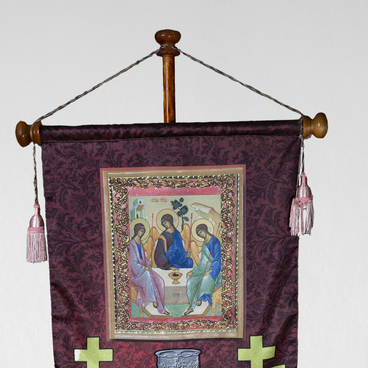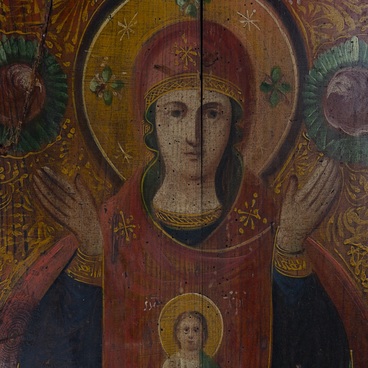In 1666, the Tsar Alexey Mikhailovich granted the establishment of the Magdeburg Law, a special municipal government system, in the town of Pogar. According to this system, settlements received economic and legal independence from feudal lords. The system was developed in the 13th century and named after the German town of Magdeburg. The codes of German law Sachsenspiegel, also known as “Saxon Mirror”, and Magdeburg town charters were the basis for the Magdeburg Law, which established rules of trade, elected members of the city government, and determined how the merchants and craftsmen’s union should operate.
Guilds in Pogar were first established in the 17th century. There were guilds of shavtsy (shoemakers), kravtsy (tailors), kovaly (blacksmiths), bell-ringers (coppersmiths), shapovaly (hat makers), bakers, butchers, bogomazy (icon painters), and other professions. Each guild formed a socio-religious fraternity of the guild minor landed gentry. Fraternities built churches, schools, and almshouses which attended to sick and elderly people. A fraternity house was used for holding meetings and celebrating patronal festivals.
A guild’s khorugv was also kept there. It depicted an icon of a saint that patronized a certain craft. A khorugv was decorated with fringes and tassels, and its pole was often topped with a cross with saints’ faces. Velvet or brocade fabrics were used to make a banner. Khorugvs were embroidered with gold threads and decorated with webbing.
Records show that the blacksmiths’ guild was established in 1769, however, it had been mentioned even earlier. Its khorugv depicted Saints Cosmas and Damian who patronized blacksmiths, as well as the guild’s emblem featuring crossed tongs and hammer. The name and last name of the head of the guild were embroidered below. The guild’s head was elected by the whole fraternity. If a different person was elected the next term, the name embroidered on the khorugv changed. The banner housed by the Radogoshch Museum features the name Gerasim Itskov. The researchers suggest that he was elected more than once.
During festive church services, the fraternity members placed khorugvs near a kliros — a place for chanters and church choir. Before the start of a Cross Procession, khorugv-bearers put on sticharion — special wide-sleeved long clothes, then received a priest’s blessing to take out banners and carry them ahead of the procession. Khorugvs were always carried by men.
The blacksmiths’ guild had its own barrows — stretchers for carrying the dead — and a reserved area in the cemetery near the Athanasius Church.
Guilds in Pogar were first established in the 17th century. There were guilds of shavtsy (shoemakers), kravtsy (tailors), kovaly (blacksmiths), bell-ringers (coppersmiths), shapovaly (hat makers), bakers, butchers, bogomazy (icon painters), and other professions. Each guild formed a socio-religious fraternity of the guild minor landed gentry. Fraternities built churches, schools, and almshouses which attended to sick and elderly people. A fraternity house was used for holding meetings and celebrating patronal festivals.
A guild’s khorugv was also kept there. It depicted an icon of a saint that patronized a certain craft. A khorugv was decorated with fringes and tassels, and its pole was often topped with a cross with saints’ faces. Velvet or brocade fabrics were used to make a banner. Khorugvs were embroidered with gold threads and decorated with webbing.
Records show that the blacksmiths’ guild was established in 1769, however, it had been mentioned even earlier. Its khorugv depicted Saints Cosmas and Damian who patronized blacksmiths, as well as the guild’s emblem featuring crossed tongs and hammer. The name and last name of the head of the guild were embroidered below. The guild’s head was elected by the whole fraternity. If a different person was elected the next term, the name embroidered on the khorugv changed. The banner housed by the Radogoshch Museum features the name Gerasim Itskov. The researchers suggest that he was elected more than once.
During festive church services, the fraternity members placed khorugvs near a kliros — a place for chanters and church choir. Before the start of a Cross Procession, khorugv-bearers put on sticharion — special wide-sleeved long clothes, then received a priest’s blessing to take out banners and carry them ahead of the procession. Khorugvs were always carried by men.
The blacksmiths’ guild had its own barrows — stretchers for carrying the dead — and a reserved area in the cemetery near the Athanasius Church.



